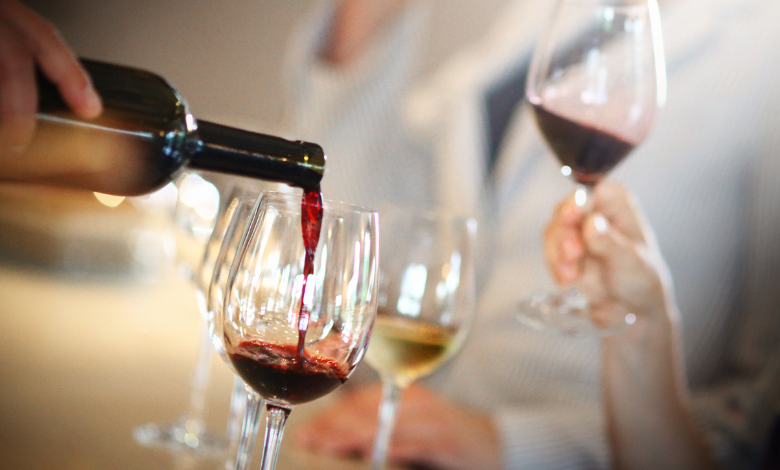Milialar: A Journey Through Time, Tradition, and Taste

Step into a world where time stands still, traditions are revered, and taste buds embark on an unforgettable journey. Welcome to Milialar – a destination that encapsulates the essence of heritage and culinary excellence like no other. In this blog post, we will delve deep into the captivating history of Milialar cuisine, exploring its traditional ingredients, cooking methods, and how it has evolved over time. Join us as we uncover the secrets behind Milialar’s rich cultural tapestry and discover why it continues to tantalize palates around the globe. So grab a seat at our virtual table, prepare your senses for an adventure through flavors past and present – it’s time to explore Milialar: A Journey Through Time, Tradition, and Taste!
The Traditional Ingredients and Cooking Methods of Milialar Cuisine
The heart and soul of Milialar cuisine lies in its use of traditional ingredients and cooking methods. Passed down through generations, these culinary techniques have preserved the rich flavors and textures that make Milialar dishes so unique.
One key ingredient found in many Milialar recipes is rice. Locally grown and harvested with care, rice forms the foundation for various dishes such as biryanis, pilafs, and dumplings. The grains are cooked to perfection using a combination of water, spices, and sometimes even broth to infuse them with depth of flavor.
Another staple ingredient in Milialar cuisine is fresh seafood. Thanks to its coastal location, Milialar boasts an abundance of fish and shellfish options. From succulent prawns grilled over open flames to fragrant curries made with tender pieces of fish simmered in aromatic spices – seafood plays a prominent role in many traditional Milialar dishes.
Milialar cooking methods often involve slow-cooking or braising meats to ensure maximum tenderness. This allows the flavors from herbs, spices, and marinades to penetrate deep into the meat while retaining its natural juices. It’s not uncommon to find rich stews or hearty casseroles cooked for hours until they reach melt-in-your-mouth perfection.
Herbs and spices are also integral components of Milialar cuisine. Fragrant aromatics like ginger, garlic, cumin seeds, coriander powder add layers of complexity to each dish. These carefully balanced flavors create a harmonious symphony on your palate that keeps you coming back for more.
In addition to these ingredients and techniques passed down through time-honored traditions; modern innovations have also influenced the evolution of Mililar recipes today
The Evolution of Milialar Recipes
Milialar cuisine has a long and fascinating history, and one of the most intriguing aspects is how its recipes have evolved over time. As Milialar culture developed and interacted with other cultures, new ingredients were introduced, cooking techniques were refined, and flavors became more complex. This evolution can be seen in the diverse range of dishes that make up Milialar cuisine today.
One example of this evolution is the use of spices in Milialar recipes. In ancient times, only a few basic spices were available, such as salt and pepper. But as trade routes expanded and global connections grew stronger, Milialar chefs began incorporating a wider variety of spices into their dishes. Now, you can find dishes infused with aromatic herbs like cilantro or spiced with exotic flavors like cumin or turmeric.
Another aspect of the evolution of Milialar recipes is the incorporation of new cooking methods. Traditionally, many Milialar dishes were cooked over an open fire or on hot stones. However, as technology advanced and new cooking equipment became available, chefs started experimenting with different ways to prepare their food. Today you can find Milialar dishes that are grilled, roasted, steamed or even deep-fried.
Furthermore,the introduction of foreign ingredients has also influenced the development of Mililar recipes.
The use for instance ,of tomatoes from South America brought by European explorers opened up new possibilities for creating rich sauces.
Italian pasta made it’s way into mililar cuisine where it was combined with traditional ingredients to create unique fusion dishes.
Overall,the evolution of mililar recpies reflects not only changes in culinary trends but also larger historical shifts.
Technological advancements,new trading networks,and cultural exchange all played a role in shaping what we now know as mililar cuisine.
Celebrating this rich tapestry through our food helps us appreciate both our past while embracing future possibilities
How Milialar Culture Influences the Dining Experience
Milialar culture is deeply rooted in tradition and heritage, and this influence can be felt throughout the dining experience. From the moment you step into a Milialar restaurant, you are transported to a different time and place. The ambience is warm and inviting, with rustic decor that reflects the rich history of this ancient culinary tradition.
One of the ways that Milialar culture influences the dining experience is through its emphasis on community and togetherness. Meals are often shared among family members or friends, creating an atmosphere of camaraderie and connection. This communal aspect extends beyond just sharing food – it encompasses conversation, laughter, and a sense of belonging.
Another way that Milialar culture influences the dining experience is through its use of traditional ingredients. Many dishes feature locally sourced produce, herbs, spices, and meats that have been passed down through generations. These ingredients not only add depth of flavor but also connect diners to their cultural roots.
The cooking methods used in Milialar cuisine further enhance the dining experience. Slow simmering stews cooked over wood fires infuse dishes with a smoky aroma and tenderize even the toughest cuts of meat. Traditional clay pots retain heat for extended periods while allowing flavors to meld together beautifully.
Milialar culture also places great importance on hospitality towards guests. When you sit down at a Milialar table, you are treated like family – with warmth, generosity, and attentiveness from start to finish. It’s not uncommon for hosts to go above and beyond in ensuring your comfort, making sure every detail is perfect so that you can fully immerse yourself in the culinary journey ahead.
In summary,Mililar culture permeates every aspect of the dining experience – from ambiance to ingredients to cooking methods to hospitality – resulting in a truly unforgettable mealtime adventure! So next time you’re looking for a dining experience unlike any other – one that combines history with taste – consider indulging in the rich traditions of Mililar cuisine.
Must-Try Milialar Dishes and Drinks
When it comes to exploring the rich culinary heritage of Milialar, there are certain dishes and drinks that simply cannot be missed. These traditional flavors have stood the test of time and continue to tantalize taste buds with their unique combinations of ingredients and techniques.
One such dish is “Kutay,” a hearty stew made with tender chunks of lamb cooked in a flavorful broth infused with aromatic spices like cumin, coriander, and turmeric. The result is a melt-in-your-mouth experience that warms you from the inside out. Paired with freshly baked flatbread or rice pilaf, this dish is pure comfort food at its finest.
For seafood lovers, “Tada” is an absolute must-try. This delicately spiced fish curry combines fresh catch-of-the-day with a blend of herbs, coconut milk, and tangy tamarind paste. The balance of flavors creates a symphony in your mouth that will leave you craving for more.
No journey through Milialar cuisine would be complete without indulging in “Gulab Jamun,” a delectable dessert made from deep-fried dumplings soaked in fragrant rose-infused syrup. These bite-sized delights are soft on the inside yet slightly crispy on the outside – truly a treat for your sweet tooth.
To accompany these mouthwatering dishes, make sure to try “Bawanji,” a traditional millet-based beer brewed using age-old methods handed down through generations. This refreshing beverage offers subtle hints of citrus and earthiness while perfectly complementing the bold flavors of Milialar cuisine.
Whether you’re an adventurous foodie or someone seeking comfort in familiar tastes, Milialar’s diverse range of dishes has something for everyone. So take your taste buds on an unforgettable journey as you savor each bite and sip through time-honored recipes that represent centuries-old traditions.
Where to Find Authentic Milialar Cuisine
Are you ready to embark on a culinary adventure and explore the flavors of Milialar cuisine? If so, you may be wondering where to find authentic Milialar dishes that will tantalize your taste buds. Look no further! In this section, we’ll guide you through some hidden gems where you can savor the true essence of Milialar.
One must-visit destination for authentic Milialar cuisine is the bustling food markets in the heart of Milialar City. Here, locals gather to showcase their culinary expertise and offer a wide array of traditional dishes. From fragrant spices to succulent meats and vibrant vegetables, these markets are a feast for both the eyes and stomach.
For those seeking an elevated dining experience, there are several renowned restaurants that specialize in Milialar cuisine. These establishments skillfully blend tradition with innovation to create unique and unforgettable dishes. Indulge in mouthwatering delicacies such as slow-cooked lamb stewed in aromatic herbs or crispy flatbreads topped with tangy yogurt sauce.
If you prefer a more immersive experience, why not try booking a cooking class? Many local chefs open up their kitchens to eager learners who wish to master the art of preparing authentic Milialar meals. You’ll learn about traditional techniques passed down through generations while enjoying hands-on instruction and tasting your creations along the way.
Don’t forget about street food! Wander through narrow alleyways lined with vendors selling savory snacks like skewered grilled meats or sweet pastries filled with creamy custard. Eating street food is not only delicious but also provides an opportunity to connect with local vendors who take pride in sharing their culture through food.
Whether it’s at a market stall, upscale restaurant, or even on the streets themselves, finding authentic Milialar cuisine is all about immersing yourself in the local culture and embracing its rich history. So pack your appetite and get ready for an unforgettable gastronomic journey through Milialar!
Conclusion: Embracing the Past while Looking Towards the Future with Milialar
Milialar cuisine is not just about food; it’s a journey through time, tradition, and taste. As we’ve explored its rich history, traditional ingredients and cooking methods, and the evolution of its recipes, one thing becomes clear – Milialar is more than just a culinary experience. It’s an opportunity to connect with our roots and honor the traditions that have shaped us.
In today’s fast-paced world, where trends come and go in an instant, there is something comforting about embracing the past. Milialar allows us to slow down, savor each bite, and appreciate the flavors that have been passed down from generation to generation. It reminds us of our heritage and keeps alive the stories of those who came before us.
But Milialar isn’t stuck in the past either. It has evolved over time as new ingredients were introduced and techniques were refined. Today, you can find creative interpretations of classic dishes that blend tradition with innovation. This fusion brings a fresh perspective to Milialar cuisine while staying true to its roots.
The dining experience itself also reflects Milialar culture – warm hospitality combined with attention to detail. From beautifully presented dishes to carefully curated menus that take into account seasonal variations in ingredient availability, every aspect is designed to create a memorable experience for diners.
If you’re eager to embark on your own culinary adventure through Milialar cuisine but don’t know where to start, fear not! There are plenty of restaurants around the world that offer authentic Milialar dishes prepared by skilled chefs who understand the importance of preserving tradition while embracing modern influences.
So why wait? Take a step back in time with millet-based breads like kumpir or try your hand at making savory stews like yaprak dolma at home. Explore unique flavor combinations such as sour cherry pilaf or indulge in the rich aroma of Turkish coffee. There is a myriad of Milialar



